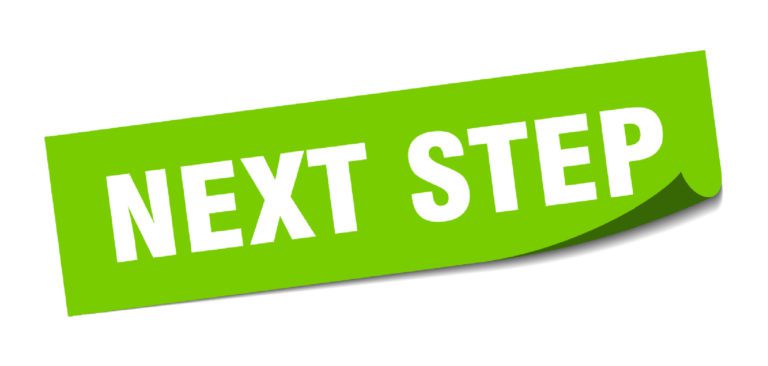Here’s the deal.
There are over 2 million active sellers on Amazon right now. That’s a 45% market growth compared to the previous year. And this number keeps increasing by the minute!
While selling on Amazon is a lucrative business model offering plenty of promise, it’s safe to say that the marketplace is getting pretty crowded. And, it’s not expected to slow down any time soon.
So how can you be successful?
Well, it all depends on how many eyeballs you can bring to your listing, along with conversions. But this is not going to happen simply by following the crowd. You’ll need something new, something shiny – you’ll need the power of product differentiation.
In this blog, we’ll talk all about product differentiation from its definition to its importance and ways to make your product set apart.
What is Amazon product differentiation?
You may be asking, what exactly is product differentiation? Simply put, product differentiation is a marketing strategy with an end goal to give you an edge over your competitors by making notable changes to your product (or listing at the very least), thus setting yourself apart.
Differentiation includes factors that mold your product into an ‘original never seen before one’ or an ‘innovative version’, making them more appealing to your customers while increasing their value.
For example, everyone loves socks. But they can get wet and be super uncomfortable to wear by the poolside on a cold winter day. That’s when someone decided to drop waterproof socks and differentiated themselves from the rest.
Why should you have a distinguishing product?
Selling on Amazon isn’t as simple as sourcing a product and putting your brand name over it anymore. With saturation and competition reaching new heights, you need to have the upper hand if you want to come out unscathed and victorious.
Picture this.
There’s an aisle full of brown boxes, and in the very middle is a red velvet box. What are you going to notice (and probably buy) first?
The red box, right? This is the case with product differentiation.
It’s a common observation that customers associate their need to buy a particular product based on the value it provides and how much that product strikes out to them. And so, when you have a distinguishing feature that improves your buyer’s experience or solves their problem, they’re most likely going to buy from you.
How can you differentiate your Amazon product?
Show your audience that you go the extra mile for them and provide additional benefits that your competitors don’t. Instead of just claiming to be better, prove it by pinpointing the best qualities and features of your products.
Differentiation can be achieved through packaging, bundling, introducing a unique feature, sizing up (or down), and/or offering post purchases. The way you place your A+ content, format your listing pictures, and write the sales copy can be a differentiating factor too!
Know Your Market
Since there are so many ways to make your product stand out, how do you know which one is right for you? Well, try getting familiar with your target audience.
Get to know your audience likes, dislikes – their qualms regarding existing products similar to yours, purchase behavior, etc.
Your audience is the ones that will decide whether or not to purchase from your store. This is why you must be well aware of their needs and cater to them.
You should also be mindful of your competitors’ stance; how they sell, what they’re doing, as well as what they’re missing. Make sure you know your market like the back of your hand.

Use Data to Make Informed Decisions
Once you have done thorough research including figuring out the common complaints, getting your audience’s and competitors’ data – ask the manufacturer to make changes or tweaks that address those findings. Decide which differentiator(s) will be best for your situation and double down on them.
One tool that’s pretty good at helping you find your differentiator is the ZonGuru Love-Hate tool. It pulls out common key phrases used in positive and negative customer reviews and organizes them, so you can easily get your next differentiating idea.
Ways to Stand Out from the Competition
Size Up or Down
Size is an excellent way to differentiate your product. Brands manage to stand out in the crowd by being diverse in size. You may be able to do the same with your product.
You might use “extra-large” or perhaps “extra small” to try to draw your customers’ attention. Could you emphasize that your product is ‘streamlined,’ ‘slender,’ or ‘lightweight’?
In many cases, your product might have the same size as your competitors. However, if none of them are using the title to emphasize the dimensions, maybe you should try doing that.
Differentiate by Origin
Is your item mass-produced in a specific country or region that you can highlight in your branding or title?
Although this doesn’t apply to everyone selling on Amazon, it may work for some sellers. If you think about it, the primary factor that makes products stand out among others is their featured origin.
Consider the example of a hand fan that labels itself as “Handmade in Chuo-ku”. Its origin is what catches the attention. Isn’t that so?
There’s something about adding the source of a product, which makes it feel more exclusive and distinct than the rest. Even if you and your competitor are sourcing from the same place, featuring the origin will help your product get noticed.

Upgrade Your Packaging
First impression is the last impression. Although customers are mainly interested in what they are buying, many are concerned about the packaging as well.
For example, customers may view a great product with poor-quality packaging as a lower quality purchase. It happens all the time.
Think through your packaging and ask yourself if you could rework it to make it stand out on a crowded shelf. Can you sell your product in a bag instead of a bottle? Can you design your packaging into a unique shape? Can your packaging give the appearance of an eco-friendly alternative? Or, maybe simply add an eye-catching thank you card?
Keep in mind, you don’t want to be too far out of the box. Find an optimum balance between cost control, aesthetic standards, and user experience to get noticed on a page full of search results.
Offer a Little Extra
Everyone loves freebies. So when you offer complimentary items with your product, customers are pulled towards buying from you.
The bonuses don’t necessarily have to eat up your profit margin but should be enough to give your buyers some extra value.
Sort of like how you would rather choose a ketchup brand that gives you a mini plastic bottle to go with it. The value addition may be small, but it’s pretty effective.
Hello Bundles
Got a couple of good selling products you know are made for each other? Or maybe you have a fast-moving product that would go well with other slow-moving ones. Bundle them up!
There are many cases in which a stand-alone product simply doesn’t do, and if you sell products that compliment them, join them together as one product. You’ll notice a significant change.
For example, if you sell metal straws and a straw cleaner separately, sell them together and ease the lives of your consumers.

Emphasize Your Assets with Content and Visuals
Most sellers don’t invest in high-quality graphics and marketing content, and so this is the simplest and one of the most effective ways to give your product a competitive advantage.
People judge your product by looking at your hero image even before they see the price. You need a spotless, professionally edited, pure white background picture with a crisp, clean, and accurate product portrayal that drives clicks and conversions.
It’s not always enough to get shoppers to a product page. Once they have landed, use lifestyle images to help buyers understand how the product is used, what size it is, and how it might look in their day-to-day lives.
Also, use well-written Amazon SEO copy and aesthetic A+ Content. They show off your product and provide the information shoppers need to understand the benefits of your product.
Look for things that your competitors aren’t highlighting in the title. Is there a feature in your mix that nobody is addressing? Research the advantages of that distinct trait and place it in your title or make it a bullet point.
The secret lies in combining the customer demand with the product function.
Innovate Product Design & Functions
If your manufacturer can enhance or customize your product, you may have a competitive edge by adding a feature to your product. It doesn’t have to be a major addition though. Sometimes, all your product needs is a design tweak to make it stand out from the competition.
Adding a specific feature that solves an unsolved problem to your product will not hurt your overall manufacturing cost. Weather-proof, reinforced stitching instead of standard, scented instead of unscented, even solely changing the color is enough to give you a competitive edge – the possibilities are infinite.

The Next Step
In this short guide, we discussed the importance of product differentiation, its benefits, and some methods you can use to make your product unique.
Now, it’s time for you to start researching a differentiator for your new launch or an existing product. It might be difficult in the beginning, but once you’ll have product differentiation, you’ll wonder how you ever managed without it.
Don’t gamble on Amazon anymore – differentiate your product and win big!
About ZonGuru
ZonGuru is an all-in-one Amazon toolkit that helps private label sellers with product research, niche evaluation, competition analysis, listing optimization, inventory tracking, customer review acquisition, and running day-to-day operations of their Amazon business. Our tools bring you the most accurate data from across ten Amazon marketplaces, including the US, Canada, Mexico, UK, Italy, France, Spain, Australia, Germany, and India. We make selling on Amazon easier.
About the Author
A marketer by trade, a writer at heart, and an Amazon evangelist around-the-clock, Hammad lives and breathes the world of the smiling A. He can often be found discussing the ins and outs of the marketplace across the web. In the very rare instances when he is not busy educating the audiences, he likes to sit down and have a good me-time watching the latest football action on his large-sized TV screen.






